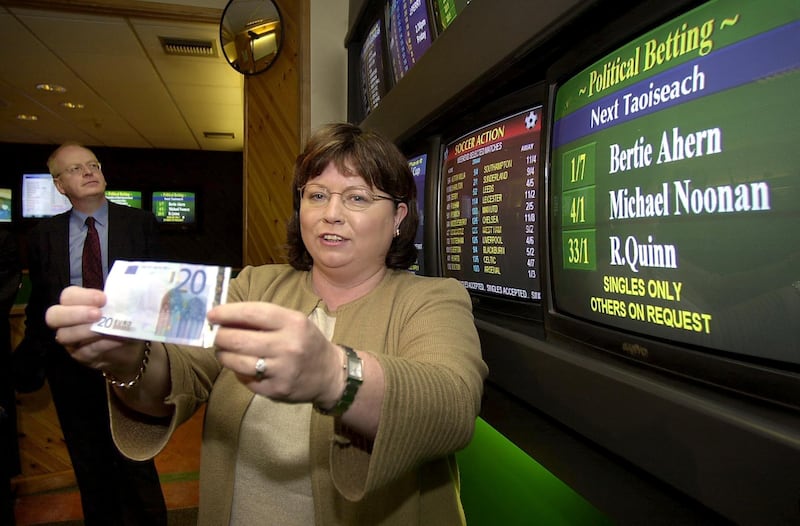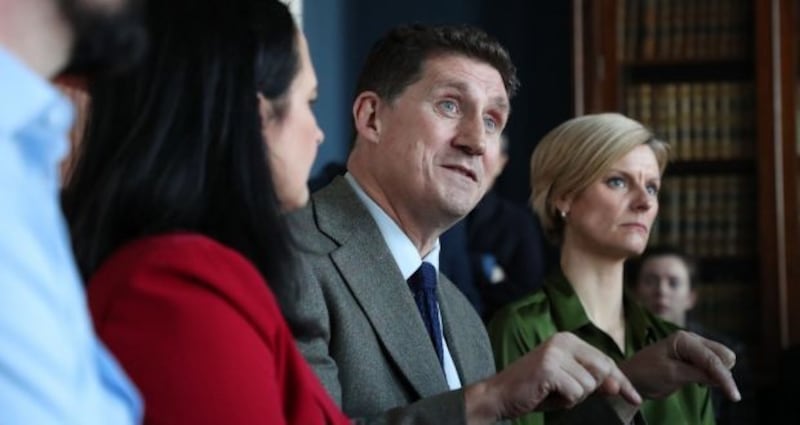If the Green Party enters government in the coming weeks, it will face a series of political, public health and economic challenges unmatched by any administration in the history of the State.
The party would also be entering government with an unprecedented combination of Fine Gael and Fianna Fáil, rivals for most of the last century, during which period each was dedicated to the electoral subjugation of the other. This novel alliance is going to take some getting used to. And both parties contain significant elements that are not just suspicious of the Greens, but wholly opposed to their worldview.
But for all these formidable obstacles, the leaders of the three parties have decided that there is a basis for a viable coalition. They have been backed by their TDs. There are obstacles to surmount for sure – agreeing a final programme for government, gaining the endorsement of each party’s members – but the parties are on course to form a government.
In an era that has seen nothing but coalition governments since 1989, it is possible to see what works in a coalition, and what doesn't
So how will it work for the Greens? How will they maintain their identity and cohesion as the smallest partner? Can they achieve their goals? And can they avoid the electoral mangling that usually (but not always) awaits small parties in a post-coalition election?
If the three-party coalition is put together (with the possible support of a few external independents) it will be unlike any government the State has ever seen. But in an era that has seen nothing but coalition governments since 1989, it is possible to see what works in a coalition, and what doesn’t.
There are many veterans of coalitions that endured – and of others that ended in disaster – around to consult. So here are seven rules and principles that will make life in coalition not just bearable, but perhaps even productive.
1. Realise that electoral disaster is not inevitable
It is certainly true that many small parties have ended up being crucified by the voters after a coalition adventure. It happened to Labour following the 1994-97 coalition, and again after the 2011-16 coalition. It happened to the Greens after their last (and only) period in government in 2011, when the party lost all its seats.
It happened to the Progressive Democrats (PDs). It happened to the Democratic Left. It happened, you could argue, to the Independent Alliance at the February election, when none of its ministers (along with another independent, Katherine Zappone) retained their seats.
But it doesn't have to be like that. In 2002, the PDs doubled their Dáil seats from four to eight after five years in government with Fianna Fáil. A decade earlier, the party went from six seats to 10 after three years in a government led first by Charles Haughey, then by Albert Reynolds. "It was crisis after crisis after crisis," says Stephen O'Byrnes, who was deputy government press secretary in that government. "But the PDs were associated with policy successes: privatisation, tax cuts, economic liberalisation."

So as a matter of historical fact, it is possible for a small party to do okay out of government. In both cases, the PDs were able to claim credit for the successes of the government which were central to their political brand.
2. Get it in the programme for government
The programme for government agreed between the parties is the "Bible" of any coalition government, says Pat Rabbitte, former Labour leader and a minister in the Fine Gael-Labour coalition between 2011-14.
“Whatever it is, if it’s in the programme for government, you have a good chance to getting it through.”
There is no guarantee that just because a policy is in the programme it will be implemented; but there is virtually no chance if it isn’t. In case of disagreement (and there will be disagreements between the parties; many of them) they will revert to the programme.
It also gives new ministers the authority to insist their civil servants work to implement their policies.
3. Build trust
Easier said than done, but absolutely essential to the successful operation of a coalition government. “If you enter government with an agreement on policy in the programme for government and with the intention of trying to make it work, then it should work,” says a veteran of coalition in the 1990s and 2000s.
The parties need to trust that their partners are committed to the enterprise, and also have political needs.
Bertie Ahern was the master of running coalition governments, leading three of them from 1997-2008. Whatever you may think of the performance of those administrations and the denouement that awaited following the financial crash of 2008, he was twice re-elected and the administrations were mostly harmonious.
Ahern used to drive his (Fianna Fáil) ministers and staff mad with concessions to his coalition partners – but he always knew they had to get something from the deal. “Even if we hated the PDs, we never went into a meeting with that attitude,” says one Fianna Fáil adviser at the time.
“Bertie never boxed himself into a corner he couldn’t get out of. There was a sort of brilliance to his vagueness.”
If the next government is to implement a Green policy, the party will have to convey to its partners how important those policies are to it; but it will also have to appreciate that some of them are difficult for Fianna Fáil and Fine Gael.
4. Relationships are key at every level
Relationships between the parties operate at three related but distinct levels: staff, ministers and leaders. All three have to function effectively. The Fianna Fáil ministers and advisers got on like a house on fire with their Labour counterparts in the 1992-94 coalition, but the coalition still fell apart because the relationship between taoiseach Albert Reynolds and tánaiste Dick Spring disintegrated.
The working relationships have to be scaffolded by structures – regular meetings of advisers and political managers and a general “no surprises” rule are features of successful coalitions.

“Goodwill in the run-up, absolute respect and, once you’re in, it’s about proper structures to manage the relationship between the parties,” says Mandy Johnston, government press secretary to Ahern and adviser in his three coalitions. “You won’t manage your partner. But you can manage your relationship with them.”
5. Build a strong centre of government
Effective coalition governments always have a strong centre. Spring learned from Labour’s miserable experience in the 1982-87 coalition and instituted a system of programme managers and advisers, attached to each minister and overseen by powerful figures at the centre of government, who managed the delivery of the administration’s programme.
"Greg Sparks and Sean Donlon commanded huge authority," says a member of the 1994-97 government. The Economic Management Council of the Fine Gael-Labour coalition of 2011-16 commanded that government from the centre; but when Joan Burton replaced Eamon Gilmore as Labour leader in 2014, the relationship at the centre frayed, and so did the rest of the government. The personal and political relationship relationship between Ahern and PD leader Mary Harney at the centre of government was central to the stability of the Fianna Fáil- PD governments led by him.
6. Learn how to work the machine
Understanding and working the machine of government is a particular challenge for a small party with little or no experience of government.
Ministerial advisers are vital to this role. One minister recalls being alarmed when he found his special adviser in a meeting with his secretary general without his knowledge. He learned to value the relationship they had.
“A secretary-general can tell an adviser, ‘the minister can’t do that’,” he says. “But he can’t tell the minister that.”
7. Define a common purpose, and the Greens’ place in it
All governments need a purpose and each component needs to feel it has an important role in that. “If you don’t have that fundamental thing from the beginning, then everything is shaky,” says Johnston. “You’re in it together.”
The Progressive Democrats had tax cuts and economic liberalisation as part of the programme for economic recovery, and to progress that was the mission of the governments the party served in. In the first two governments, it worked; it was when the PDs became indistinguishable from Fianna Fáil that the voters found them irrelevant.
The Greens will be targeted by their political opponents on the left, who are already accusing them of betraying the electorate's desire for change
Labour never managed to distinguish itself sufficiently from Fine Gael, and paid the price. Some of that was Labour’s fault. But some of it was because Fine Gael never moved aside to give Labour policy wins.
For a shared mission to work, the parties have to communicate constantly, not just with the public, but with each other. The Greens will be particularly targeted by their political opponents on the left, who are already accusing them of betraying the electorate’s desire for change.
Some of its own members believe the same, though once in government, your voters are almost always more important than your members. The party will not appease its left-wing critics, but it can look to how the German Greens successfully “triangulated” – refusing to be defined as either right or left, but rising above that division to co-operate with either as circumstances required.
“They won’t get a guarantee that they’ll be okay at the end. They won’t get everything they want,” says one coalition veteran. “But if their central message is: ‘climate change is more important than anything else, and we’re going to do something about it’, I think that’s the key for them. Announce your priorities and then achieve them.”



















